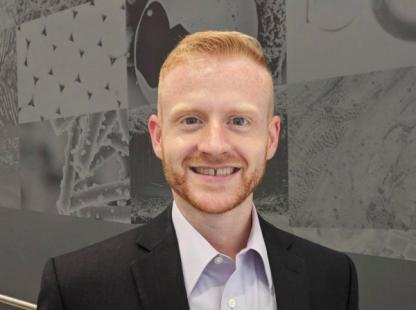
Seminar with R. Chase Cornelison
DATE: Monday, February 25, 2019
TIME: 10:15 am
LOCATION: Room 698 Fenster Hall
CONTACT: rocha@njit.edu
Speaker:
R. Chase Cornelison, Ph.D.
Postdoctoral Associate
Department of Biomedical Engineering and Mechanics
Virginia Tech
Title:
Targeting fluid flow and shear stress for brain cancer therapy
Abstract:
Fluid biotransport is an integral component to maintaining steady state function of complex biological systems. Tumor formation disrupts this homeostasis as fluid and solute accumulate within the tumor, increasing fluid pressure and driving convection into the adjacent porous tissue in a process called interstitial fluid flow. In glioblastoma, the most invasive and deadly brain tumor, heightened interstitial flow is known to increase cancer cell invasion in vitro. These results motivated examination of whether interstitial fluid flow drives tumor cell-intrinsic or -extrinsic mechanisms of invasion in vivo and identification of new, flow-targeted brain cancer interventions. This seminar will detail in vitro and in vivo methods for manipulating interstitial fluid flow in brain cancer and the implications of pathological fluid shear stress in the brain. Using a technique called convection enhanced delivery, application of interstitial flow into glioma tumors directly increased tumor cell invasion in vivo. Blocking the effects on cancer cells proved only partially successful in limiting this response. Cancer is a disease of the tissue; therefore, brain-resident cells comprising the so-called tumor microenvironment were logical next targets. Analyzing regions around the tumor revealed a set of genes that was specifically upregulated in regions of high fluid flow. A new model of the human glioblastoma tumor microenvironment enabled discrete examination of how these gene products influence invasion in the presence of two distinct neural cells and interstitial flow. Pathological shear stress in 2D (~0.1 dyne/cm2) significantly upregulated gene expression in one neural cell type, and blocking the gene product significantly decreased glioma cell invasion in 3D. However, this mitigation required the presence of both neural cells and fluid flow, revealing a multi-cellular mechanism through which interstitial flow stimulates invasion. Ultimately, this work uncovered a novel strategy for limiting brain tumor spread by targeting flow-stimulation of the adjacent tumor microenvironment.
Bio:
Dr. Cornelison is a Postdoctoral Associate in the Department of Biomedical Engineering and Mechanics at Virginia Tech. His research focuses on defining the role of fluid biomechanics in brain cancer progression. He received his B.S. in Chemical and Biomolecular Engineering from the University of Tennessee - Knoxville. He subsequently earned his Ph.D. in Chemical Engineering from the University of Texas at Austin working with Dr. Christine Schmidt. His graduate research focused on creating natural materials for spinal cord regeneration. During his graduate studies, he physically relocated to the University of Florida (Biomedical Engineering) while remaining enrolled at UT Austin. He began his postdoctoral work in the Department of Biomedical Engineering at the University of Virginia working with Dr. Jennifer Munson and later helped relocate research operations to the current location at Virginia Tech.
